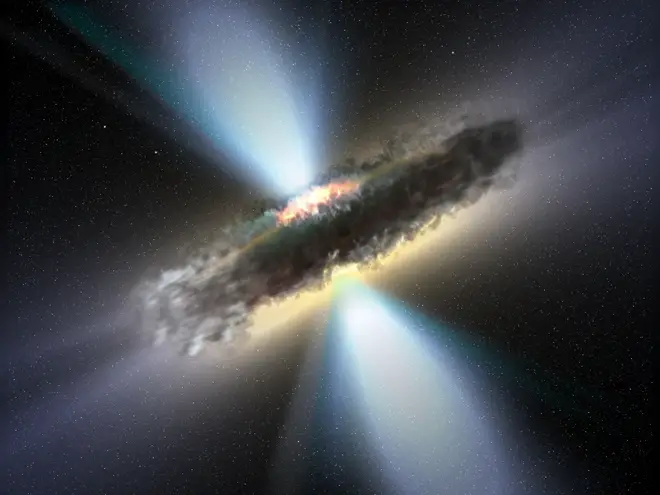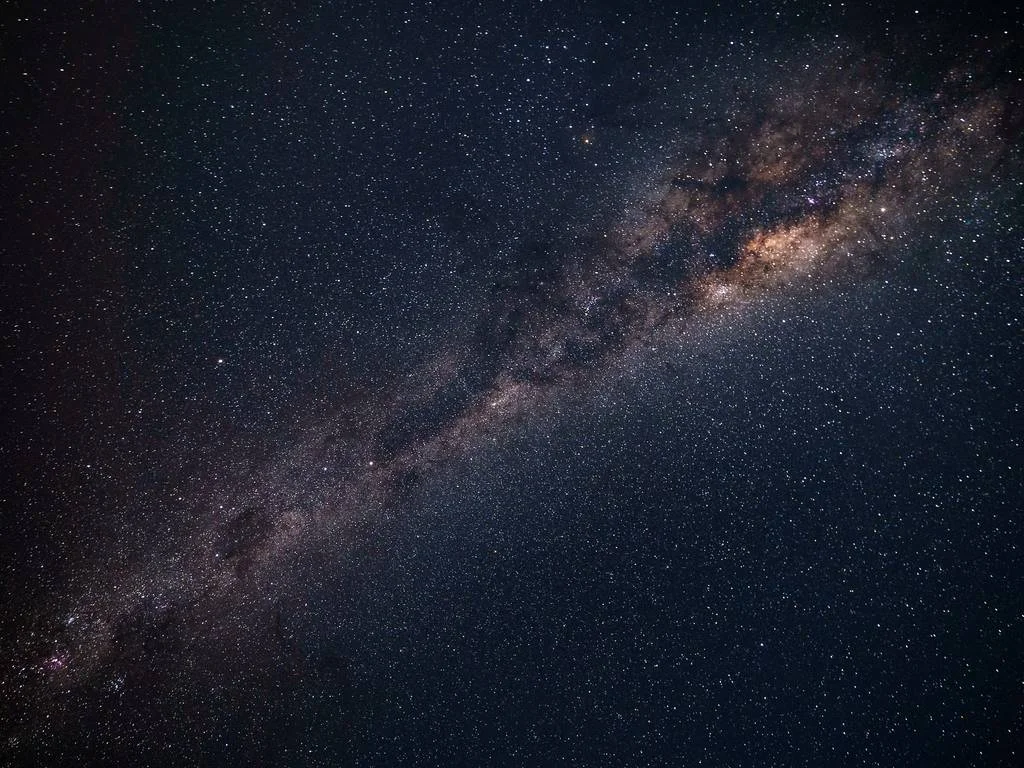Water is essential for life as we know it, but how common is it in the universe? Astronomers have been searching for water in various forms, such as ice, vapor, and liquid, in different cosmic environments, such as planets, moons, comets, and interstellar clouds.

Table of Contents
One of the most surprising discoveries of water in space was made by two teams of astronomers who found the largest and most distant reservoir of water ever detected.
A quasar with a thirst for water
The water reservoir surrounds a quasar, a powerful source of light and energy that is fueled by a supermassive black hole at the center of a galaxy. The quasar, named APM 08279+5255, is located more than 12 billion light-years away from Earth, which means we see it as it was when the universe was only 1.6 billion years old. The black hole in this quasar is 20 billion times more massive than the sun and produces as much energy as a thousand trillion suns.

The astronomers used radio telescopes to detect the presence of water vapor in the gas around the quasar. Water vapor is an important molecule that can reveal information about the physical conditions and chemical composition of the gas. The astronomers found that the water vapor is distributed in a region spanning hundreds of light-years around the black hole, and that it has a mass equivalent to 140 trillion times all the water in Earth’s oceans.
A hot and dense environment
The water vapor in this quasar is not like the water we are familiar with on Earth. It is extremely hot and dilute, with a temperature of about -53 degrees Celsius and a density of 300 trillion times less than Earth’s atmosphere. However, compared to other galaxies, this quasar has a very warm and dense environment, which is influenced by the intense radiation and gravity of the black hole.
The astronomers also measured other molecules in the gas, such as carbon monoxide, which can indicate how much gas is available to feed the black hole. They estimated that there is enough gas to sustain the black hole’s growth for another 40 million years, until it reaches six times its current size. However, some of the gas may also form new stars or be blown away by powerful winds from the quasar.
A glimpse into the early universe
The discovery of water vapor in this quasar is remarkable for several reasons. First, it shows that water is ubiquitous throughout the universe, even at very early times when galaxies were forming and evolving. Second, it provides a unique window into the physical and chemical processes that occur near supermassive black holes in the distant universe. Third, it challenges our understanding of how water forms and survives in such extreme environments.
The astronomers hope to find more examples of water reservoirs around quasars and other cosmic objects, using current and future telescopes. By studying water in space, they can learn more about its origin, distribution, and role in shaping the evolution of galaxies and life.
